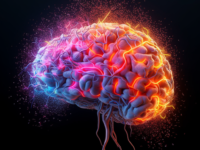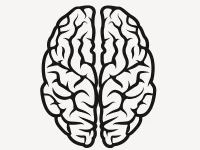For millions of people around the world, COVID-19 was not just a week-long scare; it became a chronic condition. The most familiar symptoms of COVID-19 resemble those of the common cold, but it had a much farther reach than respiratory or muscular difficulties, especially in adolescent communities.
Newer concerns are coming to light regarding how COVID-19 physically altered the brain. One group, led by Stanford University psychologist Ian Gotlib, found anatomical differences in the brains of teenagers who suffered from COVID-19 compared to adolescents who did not, which indicated early brain maturation. Gotlib’s study compared 163 teenagers split into two groups with roughly equal proportions of age and sex. One group was assessed before the pandemic (pre-COVID), and the other was assessed during it (peri-COVID). They found that many of the peri-COVID adolescents had considerably thinner cerebral cortices than what was expected for their age.
The cerebral cortex is largely responsible for higher-level processes of the brain such as language, learning and memory, reasoning and decision-making, and personality. While the cerebral cortex naturally thins with age, premature thinning could possibly lead to issues with attention and memory and even increase the risk of depression due to disturbances of social stimuli. The study also revealed that the peri-COVID group had increased hippocampal and amygdala volumes. The hippocampus and amygdala are crucial to regulating memory and emotion, and issues with these parts of the brain could lead to behavioral or learning difficulties.
Gotlib’s lab concluded that the pandemic not only adversely affected adolescent mental health but also accelerated brain maturation, potentially leading to increased stress and negative emotions. Changes in the cerebral cortex, hippocampus, and amygdala could have drastic impacts on individuals’ higher-order processes.
Premature brain development is closely related to the concept of epigenetic aging, which is the degree of biological aging based on DNA methylation, which alters gene expression and is a key process in normal development. An individual’s epigenetic age may be older than their chronological age if they have experienced potentially harmful environmental factors, such as extreme stress or a serious disease.
A team of researchers led by Xue Cao at the Guizhou Provincial People’s Hospital in Guizhou, China, conducted DNA methylation experiments to compare epigenetic age acceleration in healthy individuals to COVID-19 patients. Those with COVID-19, especially severe cases, demonstrated accelerated epigenetic aging. Interestingly, Cao’s team also found that those with shorter telomeres tended to be at risk for more severe cases of COVID-19. Telomeres are DNA-protein structures on the ends of chromosomes that protect genetic information from deterioration, unnecessary combination, and other dangers. The gradual shortening of telomeres, called attrition, occurs naturally with age, but the association between telomere attrition and the severity of COVID-19 gives an early insight into the connection between COVID-19 and epigenetic age.
Another important conclusion that Cao’s team reached was that accelerated epigenetic aging could contribute to post-COVID-19 syndrome in severe cases, impacting multiple body systems and possibly causing autoimmune conditions. Understanding the association between telomere attrition and severe COVID-19 cases could improve risk calculators and better prepare doctors for complications.
“The two studies led by Gotlib and Cao show a few of the far-reaching impacts that the pandemic had on the human body, accelerating both adolescent brain maturation and aging.”
The two studies led by Gotlib and Cao show a few of the far-reaching impacts that the pandemic had on the human body, accelerating both adolescent brain maturation and aging. It is important to consider the implications these results have for future studies. Researchers must consider whether these changes are temporary, particularly when establishing baseline or control groups for future anatomy or brain imaging studies. Future research must explore the longevity of these changes and their implications for generations to come.






